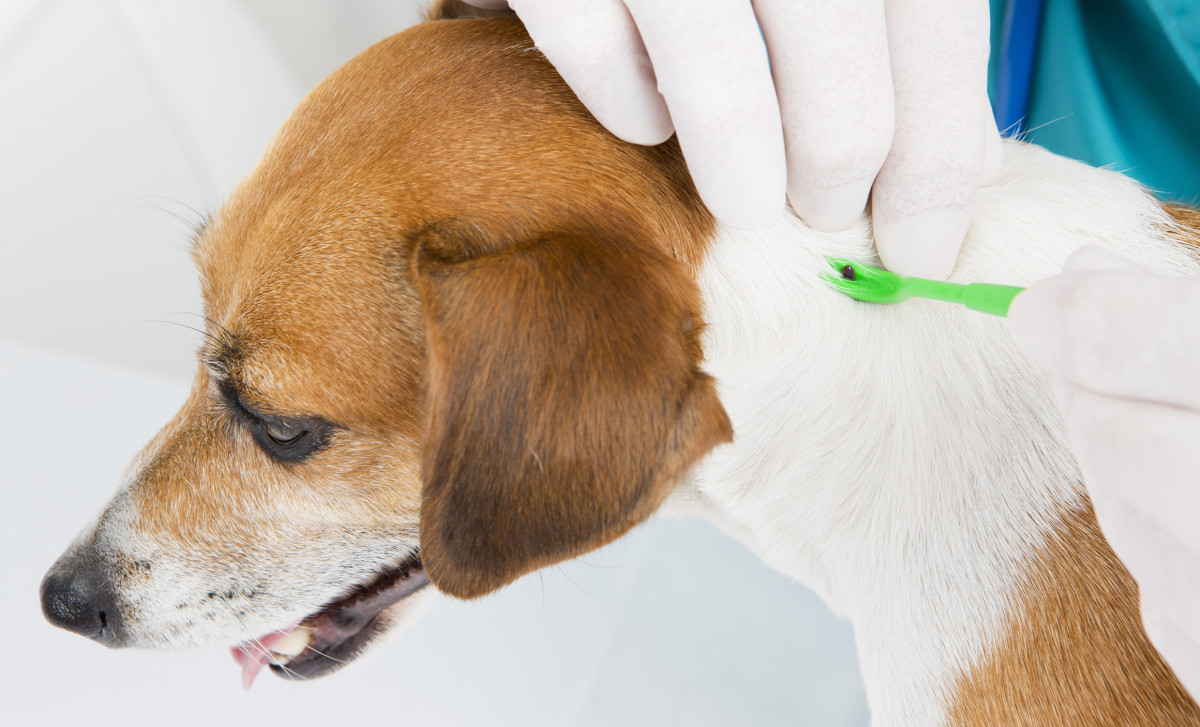DISEASES
Parasites in Dogs (Fleas, Ticks, etc.) – Symptoms and Treatments
페이지 정보
본문

Overview
External parasites, also known as ectoparasites, exist on the outer surface of their hosts, such as fleas, ticks, lice, and mites. The species of parasites vary depending on the country and region you reside. External parasites on the skin can cause various problems, such as lethargy and several skin conditions. Infectious diseases can be transmitted depending on the type of parasite, and various systemic symptoms, such as itching, inflammation, weight loss, etc., may appear. Most external parasites can be transmitted to humans as well, so periodic management is necessary for prevention.
The Most Common External Parasites Found in Dogs
There are a variety of species of ectoparasites that cause problems in dogs. These ectoparasites mainly cause problems with the skin and, in only severe cases, can cause systemic symptoms.
The following are the most common external parasites you may find on your dog’s skin.
-
Fleas
Dark brown fleas are commonly found under the ears, around the groin, or back and rear. Once fleas bite onto the skin, a blood meal enables them to lay eggs, and in exchange, the flea’s saliva can cause facial swelling, hives, itching, and other hypersensitivity reactions. Fleas can also carry internal parasites, such as tapeworms. In addition, fleas may also transfer to humans, so it is highly recommended to practice good prevention habits to avoid complications. If your dog is infected with fleas, you may see tiny black flea feces specks on the skin's surface called flea dirt. Anemia may occur in severe infections or young puppies.
-
Ticks
Hundreds of ticks can be found primarily on grassy, shrubbery, wooded areas and on any animals, humans included. Ticks commonly latch onto the neck, between dogs' ears and toes. Ticks attach to the skin and immediately begin to suck blood, which causes redness and irritation in the surrounding area. Ticks spread various contagious diseases, such as Lyme disease, Rocky Mountain Spotted Fever, and ehrlichiosis. It is rare, but due to blood being drained, symptoms of anemia may also occur.
-
Ear mites/Otodectes
Ear mites are one of the most common causes of ear diseases and infections in pets. Ear mites are usually found in the ear canals of younger dogs but can also live in the surrounding area. Dogs of all ages can be affected, but young puppies are more likely to be affected. Due to their tiny size, ear mites are highly contagious by close contact or transferred by objects like their bedding. If an ear mite infestation occurs, ear scratching, head shaking, and ear discharge can occur. If the infection becomes severe and causes excessive itching, blood vessels in the ear could break, followed by secondary infections.
-
Sarcoptic mange mites
Sarcoptic mange mites are a highly contagious parasite commonly found on a dog's face, ears, elbows, and legs. Sarcoptic mange mites cause sarcoptic mange, or scabies, which can spread quickly through close contact. Common symptoms of scabies are hair loss, scabs, inflammation, and itching. Humans who come into contact with an infected dog can also experience skin rashes.
-
Demodex mites
These microscopic mites, while not as contagious as other mites, are more commonly passed from a mother dog to her puppies. In general, demodex mites appear in young puppies or elderly dogs with weakened immune systems. If demodex mites are found in an adult dog, it is a good idea to test to confirm because this also helps to indicate a weakened immune system. You may notice localized hair loss and redness around the face, especially around the eyes. Symptoms are fairly mild and not highly contagious. More importantly, the presence of demodex mite infection can help indicate an underlying issue in your pet due to the immune system's unable to fight their effects off.
What Are the Signs and Symptoms of External Parasites in Dogs?
When infected with ectoparasites, symptoms are mainly defined by skin irritations and systemic symptoms. If parasites are left untreated, a secondary infection, such as a yeast infection or a tick-borne disease, can develop symptoms such as fever, vomiting, and diarrhea.
The list shows the key signs and symptoms of an external parasite on your dog’s skin.
- Itching (chewing, licking, scratching, or shaking the head)
- Erythema
- Hives
- Swelling
- Abscess, Pustule, Papule
- Hair loss (alopecia)
- Lethargy
When to See a Vet for an Ectoparasite Infection in Dogs
If many parasites are present, severe itching, redness, or swelling is observed, a visit to the hospital as soon as possible is necessary. If skin irritation symptoms persist for 3 or more days, a secondary or bacterial infection can develop due to severe untreated scratching. Similarly, fever, vomiting, diarrhea, loss of appetite, or energy symptoms after a tick bite can indicate the presence of a tick-borne disease.
How to Treat Parasites for Dogs at Home
If the parasite is attached only to the hair or the number of parasites is a few, you can remove them at home if done correctly. Gloves and fine tweezers are recommended to grab each tick as close to the skin's surface as possible and pull it out with steady and consistent pressure. Place the tick in rubbing alcohol to kill it, disinfect the bite site, and keep it clean. If the tick is removed poorly, the head or teeth of the parasite can become lodged in the skin, causing an infection and further irritation. If the head is still stuck in the skin, leave it as is and take your dog to a vet to remove the remaining pieces properly. After home removal, it is a good idea to keep the terminated parasites in a small container in case of symptoms of an illness appear. Testing the parasite causing the condition can help accurately diagnose your dog. It is also recommended to disinfect the area your dog passes, such as bedding and carpeting, to avoid re-infection with repellents.
Some products available can help treat parasites at home, such as special shampoos, various medications, sprays, and spot-on products. You should consult your veterinarian for approval before you purchase the most effective and safe products for your pet.
How Are External Parasites Diagnosed in Dogs at the Hospital?
A veterinarian may ask about the lifestyle and routine for the days leading up to infection. Ectoparasites are easily diagnosed through visual and physical examination. If scabies is suspected, skin scraping may be required. Any systemic symptoms accompanying a parasite infection may lead to further tests to confirm diseases or secondary infection. Depending on which symptoms appear, these tests include a blood test, PCR test, or both. Ear mites will require an otoscope to confirm a diagnosis.
Treatment for External Parasites in Dogs
If the parasite is detected early and dealt with appropriately, treatment can end with removal and disinfection. However, treatments will vary depending on the parasite and skin disease diagnosed. Different medications to expect according to the diagnosis are topical ointments, antibiotics, antifungal, and anti-inflammatory medication. Systemic ectoparasite infections are treated with anthelmintic drugs, such as fluralaner, ivermectin, and milbemycin. Your veterinarian will best judge your dog’s lifestyle and condition and prescribe the appropriate medication.
How to Prevent External Parasites in Dogs?
The best step in prevention is to keep your dog’s flea and tick prevention medication up to date. Regularly check your dog’s skin after a walk through a wooded area or tall grass. Many parasite prevention products are available over-the-counter and prescribed by a veterinarian. For each medication, follow the veterinarian’s suggestion or instructions.
Find out more about your dog’s symptom and disease in the Buddydoc Library!

The Buddydoc library is filled with everything you’d want to know about each symptom and disease your pet may experience. If you would like to find out more about the causes, signs, treatments, preventions, and more for your dog’s symptom. Try out the Buddydoc app and search your pet’s symptom or behavior in the Buddydoc library.













